Top 12 Interesting Facts about Penguins
One of the most recognizable creatures in Antarctica is the penguin. And it's easy to understand why. Even the hardest hearts will melt when they see these ... read more...cute penguins. There are 18 different species of penguins that scuttle throughout the continents of Africa, South America, Australia, New Zealand, Antarctica, and even the Galapagos Islands. Here are 12 interesting facts about penguins, the beloved Antarctic bird.
-
Penguins are classified as marine birds since they spend up to 80% of their life in the ocean. It's a popular misconception that all penguins reside in Antarctica, however, they all reside in the Southern Hemisphere. Penguins are present on every continent in the Southern Hemisphere. The idea that penguins can only survive in icy environments is likewise untrue. For instance, the Galapagos penguin resides on warm-weather islands near the equator. Penguins also reside in Argentina, Chile, Namibia, South Africa, and even France in addition to Australia and its neighbor New Zealand (Ile aux Cochons, an island owned by France, to be precise).
Since the Galapagos Islands lie on both sides of the equator and are home to one species of penguin, occasionally some of these birds may migrate to the Northern Hemisphere. All penguin species, except the sporadic wanderer, are found in the Southern Hemisphere where they seek out cooler waters. We may be more accustomed to seeing penguins in the Antarctic because of how frigid that location is. However, several penguin species may be found in temperate regions. For example, 1,400 fairy penguins can be seen on St. Kilda's pier in Melbourne, Australia. There are volunteers on hand all the time to prevent visitors from coming too close to the penguin colony since it is so treasured. Little penguins, another term for fairy penguins, is a fitting moniker for the tiniest kind of penguin.
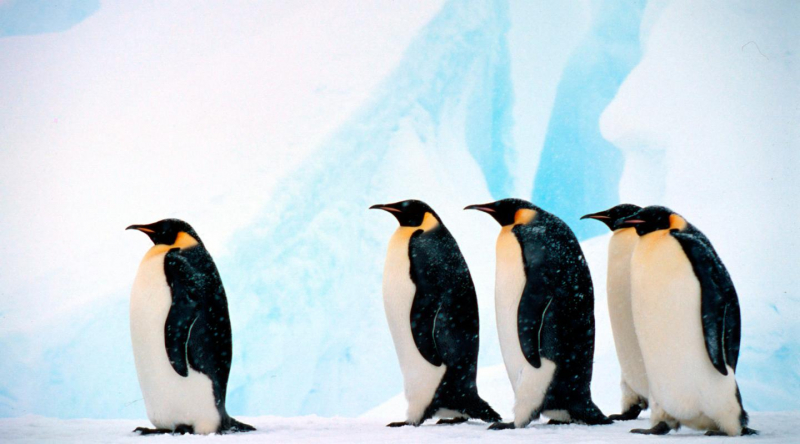
www.nationalgeographic.com 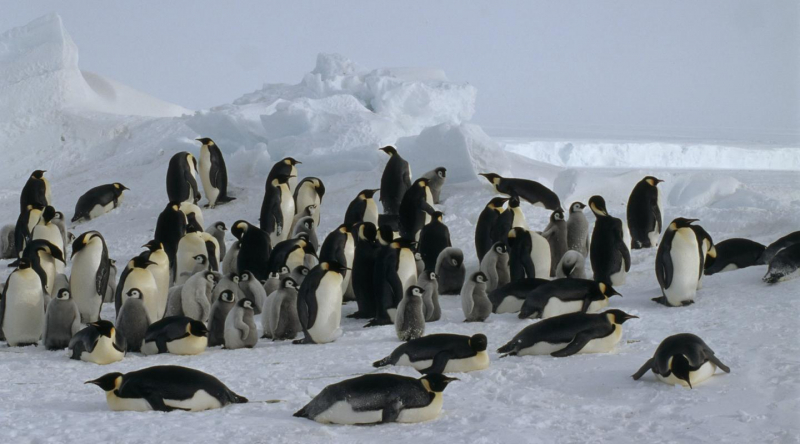
www.nationalgeographic.com -
The fact that penguins have feathers rather than fur is one of the reasons they can endure extremely cold climates. Because penguin feathers are such effective insulators, the birds have more trouble staying cool than getting warm.
In addition to their incredible insulating capacities, penguin feathers have several other extraordinary qualities. They are also icephobic, which means that they repel ice. They can therefore dive into and out of frigid water, be soaked by ocean waves, and do so without developing frozen patches on their feathers. This means that the larger-scale and microscopic structure of the feathers, as well as a special oil secreted by the animal itself and distributed over its feathers, prevent ice from getting on them. Scientists who have studied the ice-repelling feathers believe that this feat is due to three characteristics: "a unique combination of the feather's macroscopic structure, the nanoscale topography of its barbules, and the hydrophobicity of its preen oil."
Every year, penguins molt, as do other birds. When an animal molts, its old, worn-out feathers are shed and replaced by brand-new ones. However, penguins molt far more quickly than other birds, taking anything from 2 to 5 weeks. Due to their abrupt molt, which entails their marooning on the coast while they fast and lose their feathers, scientists have been tracking king penguins. When their feathers come in, chicks must regain the weight they lost, which includes practically all of their fat and part of their muscle.
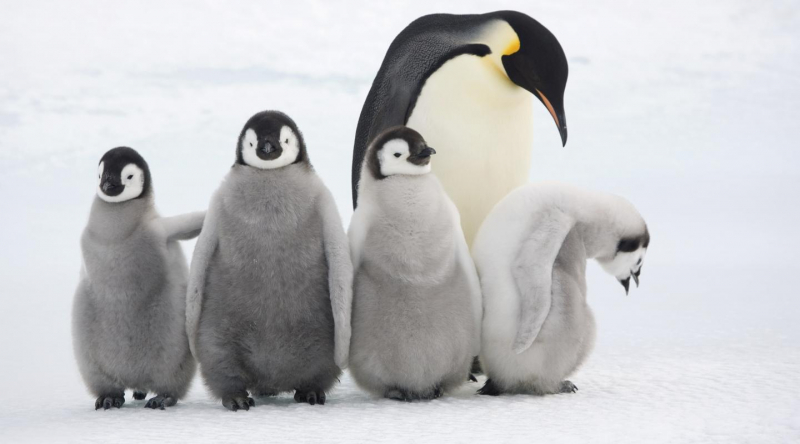
www.penguinsinternational.org 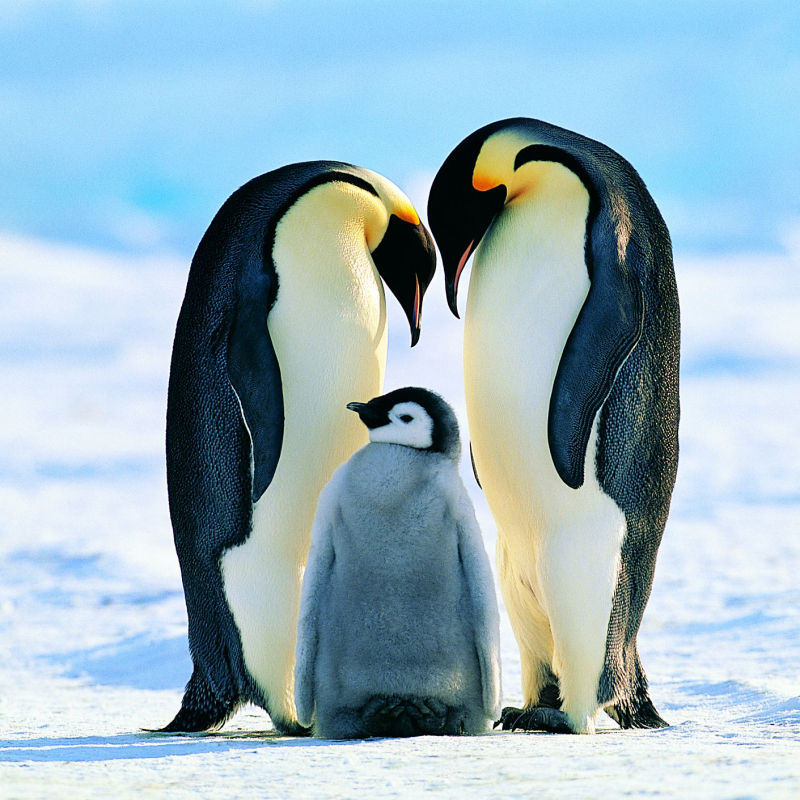
www.penguinsinternational.org -
One of the interesting facts about Penguins is that they eat a wide variety of protein-rich food. Penguins consume a variety of oceanic tiny animals. They consume krill, which are little crustaceans. Krill resemble shrimp in appearance. Depending on where they reside and the kind of penguin they are, different foods are preferred. Along with seafood, penguins naturally consume squid. A little octopus can be consumed by some penguins. While younger penguins scrape krill off the underside of the ice, larger penguins can dive deeper into the sea where they can capture squid and cuttlefish. King penguins can dive to depths of between 300 feet and 900 feet, but little penguins often only dive between 6 feet and 150 feet.
The size of the prey that a penguin consumes greatly depends on its size. The 11.81-inch-long lantern fish are a favorite food of the emperor penguin, which is the biggest species of penguin. Smaller Humboldt penguins, on the other hand, eat sardines. Sardines are little, only a few inches in length. Additionally, due to their opportunistic nature, penguins will consume anything that fits their inclinations. In addition to squid and crustaceans, some penguin species, including king penguins and yellow-eyed penguins, also consume tiny fish such as silverfish, sprats, opal fish, and pilchards.
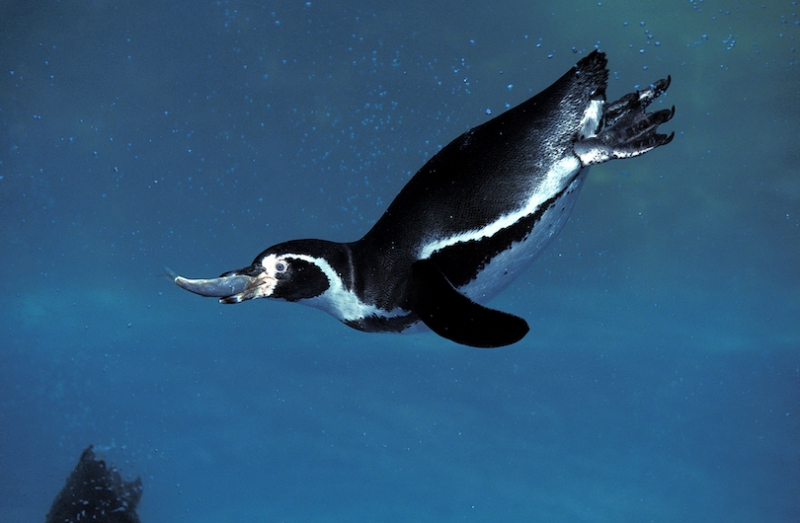
www.thoughtco.com The Zoological World - youtube.com -
The same as their avian relatives, penguins lack teeth. However, they do have spines inside of their beaks that might resemble a few teeth. These fleshy spines develop in rows and curve inward toward a penguin's neck. They slant inward to make it easier for the bird's prey to pass through its throat. In reality, a penguin deliberately consumes a fish head first so that its fins don't get caught as it descends. The serrated or barbed spines catch any fish or other prey that wriggles or tries to escape. Think of a fish hook with a barb on it that is intended to grab a fish so it won't escape. With the help of these barbed spines, a penguin may keep the prey it has worked so hard to catch.
These spines are also present on their tongues, and both sets of them point backward. These aid in swallowing and let them keep fish or other prey in their jaws. Penguins swallow stones but do not chew their meal. One of the interesting facts about penguins, which, despite how bizarre it may seem, is true. There is a purpose behind why penguins ingest stones of different sizes. For the fish or other prey to be digested in the bird's stomach, the pebbles aid in disassembling the various components of the prey. When assisting a penguin's digestive process, the pebbles rotate continuously. The stones acquire a smooth surface from all of this movement. With this action, little pebbles ultimately disappear. Larger stones, on the other hand, could pass completely through a penguin's digestive tract and exit the body when its feces.
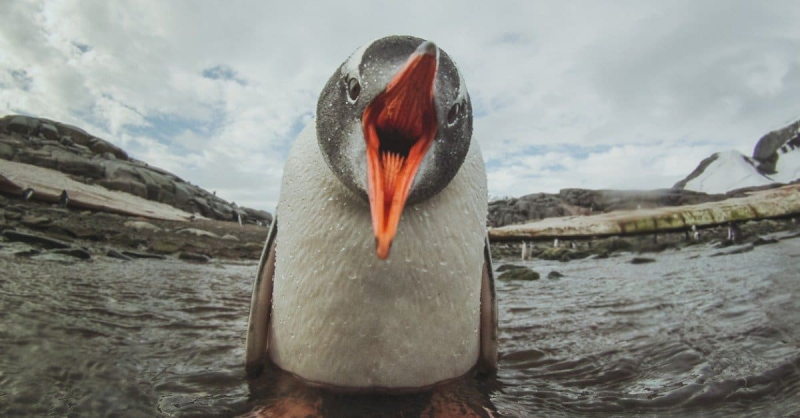
www.thoughtco.com 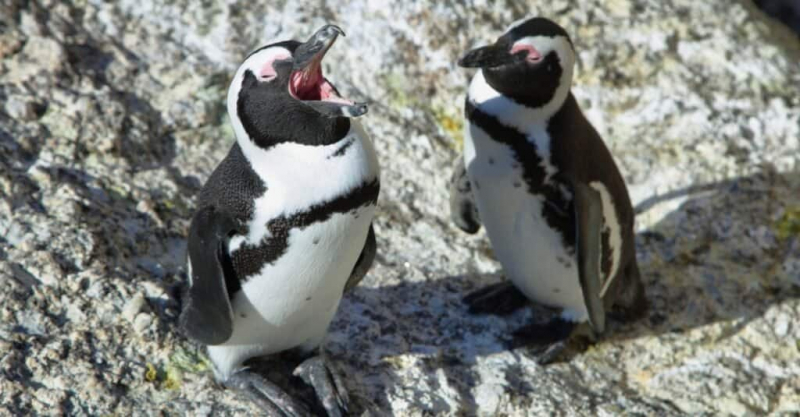
www.thoughtco.com -
Although all penguins are excellent divers, emperor penguins are the deepest and longest divers. They can descend to depths of about 500 meters and dive for 20 to 30 minutes at a time (over 1,600 feet). Penguins have mastered the capacity to regulate when and how their muscles use oxygen to survive underwater for that long. To keep their muscles active during deep dives, they may either deprive them of oxygen or give them a boost.
Scientists in McMurdo Sound used specific devices to track the muscles of various penguins during dives to understand better how emperor penguins can dive for such an extended amount of time. The penguins spent between 2.3 and 11.4 minutes below in 50 dives that were captured and ranged in depth from 7 to 64 meters (23 to 210 feet).
Researchers discovered that the emperors transported more oxygen from their blood into their muscles only during the penguins' deepest dives. However, they can only sustain this for a limited time until their blood oxygen levels drop too low for the rest of their body. Penguins must return to the surface for air when this occurs. Due to the drawback that the adaptation causes lactic acid buildup, penguins will only engage in this behavior if the reward is a tasty dinner is worth it.
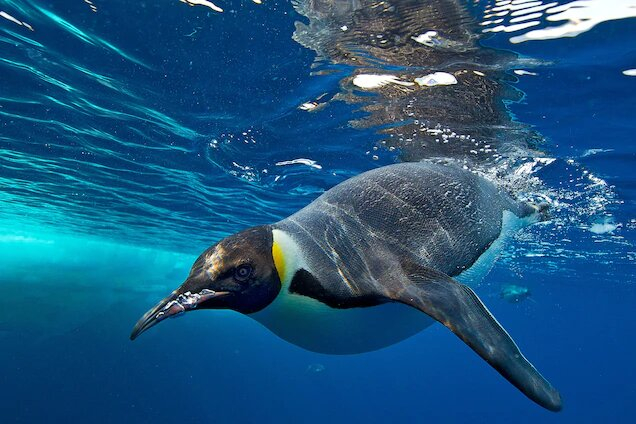
www.nationalgeographic.com National Geographic - youtube.com -
Many penguins inhabit areas without access to fresh water. For instance, penguins in Antarctica may choose between ice and seawater. Because it is more practical and accessible, penguins usually receive their water from saltwater sources. They have a unique adaption to maintain a healthy balance of salt in their bodies.
Like most birds, penguins take their beverages by swallowing water. Although that is not very noteworthy, penguins frequently are forced to consume seawater. They utilize their powerful beaks to snag fish and other prey while swimming in the water. They will capture some water while catching a meal if they open their jaws while swimming at full speed. They frequently ingest their prey whole, bringing saltwater with them.
Even though their bodies don't require any more salt than other animals, penguins have specialized organs for processing salt water. They have a supraorbital gland that removes salt from their bodies, which is situated close to their eyes. The gland, through which their blood passes, catches the salt before it enters their bodies. The supraorbital gland must still remove extra salt from the penguin's body after filtering it out of the blood. A little quantity of moisture in the gland is combined with salt, which then passes via the nasal passages. The penguin's nose is dripping with salt-filled drips. To expel the drops and remove salt from their beaks, penguins frequently shake their heads.
Penguins can drink seawater, but penguins usually prefer to drink fresh water when they can find it. Some penguins even use snow as food and drink. Freshwater is where penguins in zoos reside, and certain species, like rockhopper penguins, prefer to dwell there rather than near the sea. Since the supraorbital gland solely functions to remove salt from the blood, it is not utilized when penguins only consume fresh water. Penguins drinking pure liquids without adding salt pose no health risks.
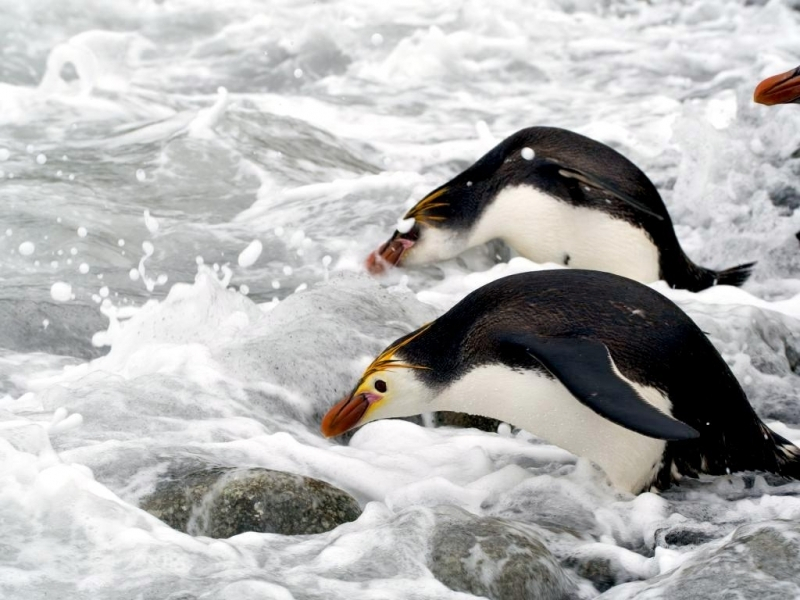
www.dreamstime.com CS FACTZ - youtube.com -
Penguins, like many other animals around the world, have developed adaptations to prevent excessive heat loss and maintain a constant body temperature. Since penguin feet cannot be covered in fat or feathers like their bodies can, they collectively form a big surface area exposed to the cold, making it difficult for them to maintain the ideal body temperature of 40°C. However, they require their feet so that they can swim and navigate themselves on the frozen surface without slipping.
Numerous penguin species have evolved behaviors that allow them to maintain a comfortable body temperature. As an illustration, Emperor Penguins bend down so that their bellies and feathers conceal their legs. They also rock back and forth onto their heels to elevate their feet off the ice, which shortens the amount of time that their feet are in touch with the ground.
However, this is not the only method penguins stay warm. Additionally, they have extraordinary morphological characteristics that have developed to properly suit their habitat. Inside those legs and feet, two secret processes are operating. First, by adjusting the diameter of the arterial arteries that feed blood, a penguin may regulate the rate of blood flow to its feet. Blood flow is decreased in cold weather to conserve heat. To prevent heat loss and frostbite, penguins will maintain their feet one or two degrees above freezing throughout the winter. The majority of a penguin's body is warm and waterproof because of their fat and feathers, yet on warm days, they are susceptible to overheating. Penguins use their beaks and their feet to allow heat escape to remain cool.
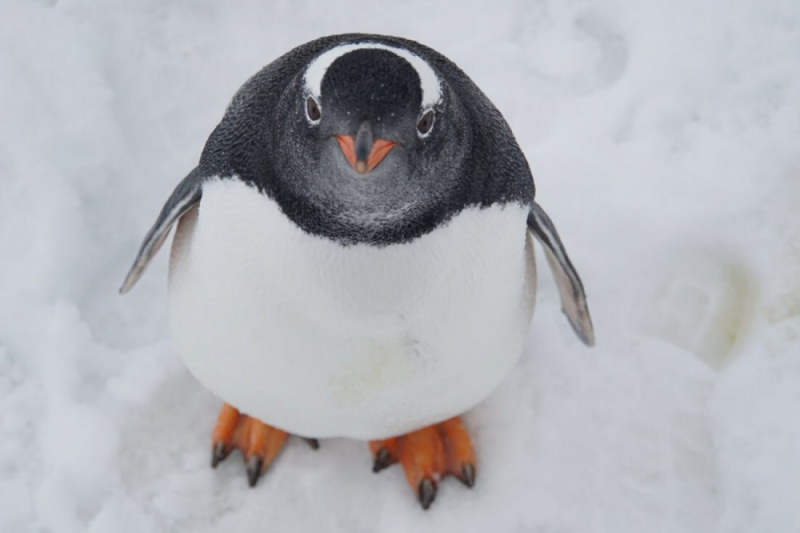
wildlifetrip.org 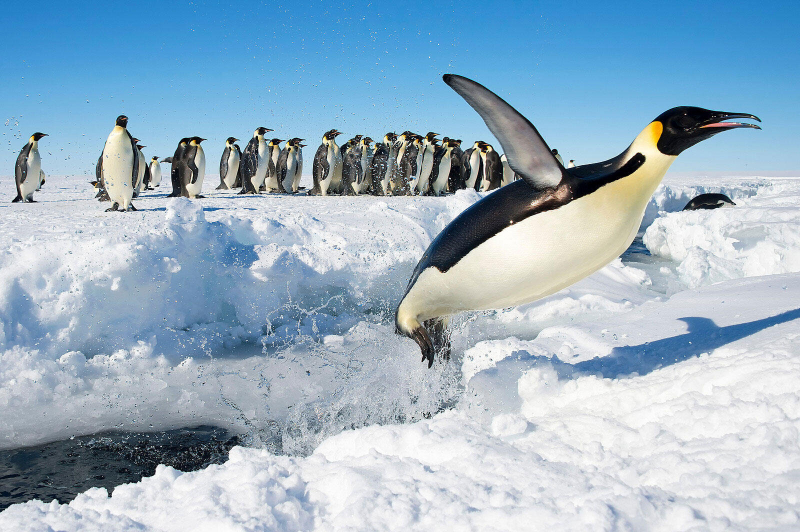
wildlifetrip.org -
Penguins are oceanic birds that live up to 75% of their lives underwater. Even penguins with barnacles sprouting on their plumage, such as the Fiordland and rockhopper species, have been discovered. The fact that penguins spend so much time in the water accounts for a large portion of what looks strange about them.
The best thing that penguins do is swim. On land, a penguin's clumsy waddle can be amusing, but that's because they were built to swim. Because of their torpedo-shaped bodies and strong flippers, penguins are adaptable sea magicians that can swim long distances and at extreme depths. On land, their legs and feet, which are far back on the body, help them waddle, but underwater, they function as streamlined rudders to reduce drag.
Additionally, they can go through tense water because of their well-developed wing and breast muscles. The hemoglobin in penguin blood is modified to deliver significant amounts of oxygen to aid in the effort of swimming. Because their muscular tissues contain a significant amount of myoglobin, penguins can effectively retain oxygen when they are underwater. To provide the least amount of water resistance when swimming, they keep their bodies compact by tucking their heads close to their shoulders and their feet close to their tails. Underwater, penguin vision is superior to that on land.
A penguin may paddle like a duck at the water's surface, yet underneath the waves, they travel at speeds quicker than Olympic swimmers. The emperor penguin, which can move at a top speed of 9 mph (14 km/h), likes to go at a constant 7 mph. The tiny penguin, the tiniest penguin, meanders at a leisurely 1 mph (1.5 km/h), whereas most medium penguins swim at roughly 5 mph (8 km/h). A migrating penguin frequently uses the swimming maneuver known as porpoising to maintain its surface within 3 to 6.5 feet.
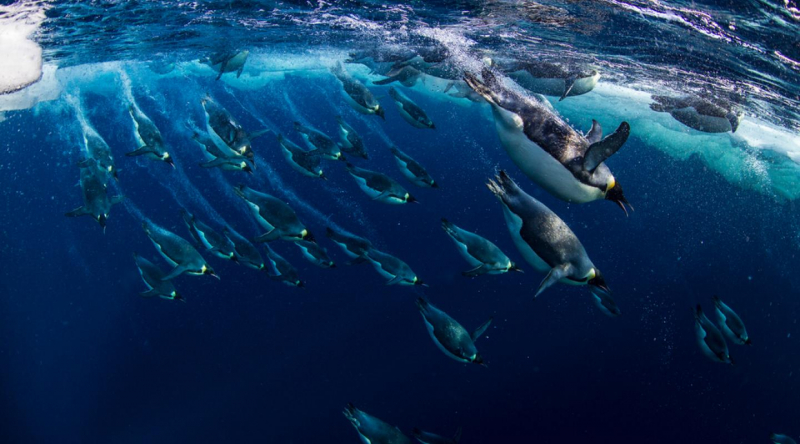
wildlifetrip.org Penguins International - youtube.com -
Penguins lack external ear flaps, much as other birds. On either side of the skull, in holes with feather coverings, are the ears. As every SCUBA diver is aware, diving's pressure shifts may harm the ear's delicate internal components. King penguins' middle ears are shielded from pressure fluctuations when diving by a specific organ comprised of cavernous tissue, according to research on the creatures' ears. The tissue stretches into the middle ear to maintain constant pressure when ambient pressure rises.
A returning parent may distinguish their kid from the rest of the colony based on its distinctive cry among the noise of hundreds of penguins on land. According to one research, African penguins have a hearing range of 100 to 15,000 Hz, with maximal sensitivity falling between 600 and 4,000 Hz. In contrast, humans have a hearing range of 20 to 20,000 Hz.
Penguins may use their extreme sensitivity to sound as a kind of defense against predators like orcas and leopard seals. According to one research, king penguins could discern between predatory and non-predatory noises even when they were asleep. When an orca calls, penguins awaken and immediately take flight. Like migratory birds, penguins may only use one-half of their brains while the other half remains alert and continually scans the environment for potential hazards.
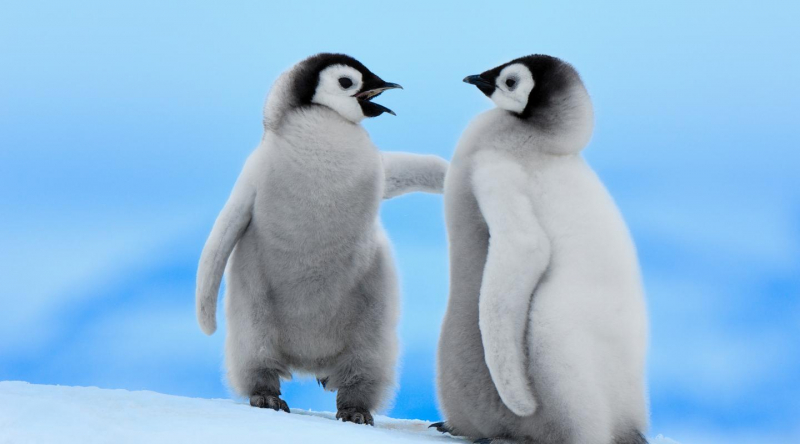
www.dreamstime.com 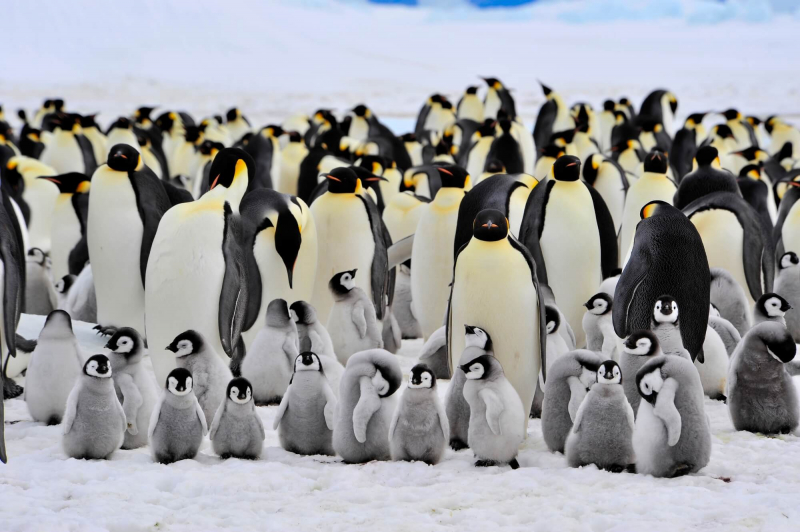
www.dreamstime.com -
The emperor penguin, which may grow to a height of around 4 feet, is the biggest species of penguin still alive. However, 2017 fossil discoveries in New Zealand revealed that the area was formerly home to penguins that were the size of people. They were 5 feet, 10 inches tall, roughly 220 pounds, and lived between 55 and 60 million years ago. The researchers concluded that the discovery of a giant penguin in the Paleocene period "suggests that gigantism in penguins evolved shortly after these birds became flightless divers." Although not the only enormous penguins in prehistoric times, they are the oldest and largest that researchers have so far discovered.
Besides, the Peruvian, Icadyptes Salasi giant stood at a somewhat shorter 5 feet during the same time but further north. This enormous creature had a distinctive 7-inch beak that may have been useful for spearing fish. The finding of this fossil challenged earlier theories of penguin migration to the equatorial region. After episodes of Earth cooling, such as those that happened during the Eocene-Oligocene (about 34 million years ago) and a subsequent cold event 15 million years ago, it was believed that penguins moved northward toward the equator. However, Icadyptes' previous migration shows that penguins did move at a period of substantial warming.
Except for Anthropodyptes Gilli, the majority of the enormous penguins had long since perished by 23 million years ago, during the early Miocene. Even up to 18 million years ago, this behemoth was still thriving in Australia. It is thought that after the extinction of the big penguins, the crested penguins' common progenitors to all living penguins today radiated from an Antarctic ancestor. A common ancestor of all existing penguin species existed as recently as 20 million years ago, according to genetic research of four penguins and discoveries of penguin fossils. Individual present species diverged between 11 and 16 million years ago. The evolutionary history of contemporary penguins is still a subject of active scientific discussion.
Wiser - youtube.com SciShow - youtube.com -
Every penguin, regardless of location or size, is what biologists refer to as "counter-shaded." Their necks, breasts, and bellies are white, and their backs and the tops of their wings are both blacks. Penguins serve as extreme examples of how shading can accomplish many of the biological color functions previously mentioned. One of the most widespread color patterns in the animal kingdom is countershading, which occurs when an object's top side is darker than its lower. Modern penguins' black-and-white plumage is a classic example of countershading: When viewed from above against the dark seafloor, the penguin's black upperparts assist to disguise it, and when viewed from below against the light coming in through the water, the penguin's bright underparts do the same.
Penguins are quite noticeable on land because of their distinctive black-and-white pattern, especially while they are scurrying around on the ice. However, for penguins, giving up stealth on land for concealment in the water makes sense because their color pattern functions as highly effective concealment. Penguin predators like orcas and seals typically swim below them in the water, making it more difficult for them to distinguish between penguins and the water's surface when they glance up. Their black backs are harder to see from above because they resemble the surrounding water.

www.daysoftheyear.com WonderScience — Explore Science with Fun - youtube.com -
The Southern Hemisphere's cold-climate seacoasts are home to flightless birds, which burn a lot more calories while walking or running than other animal species of the same weight. Even while penguins' efforts to migrate may appear useless and tiresome, a recent study by the University of California, Berkeley experts revealed how waddling aids the penguins in energy conservation. According to the researchers, the waddling study has ramifications not only for penguins but also for expectant mothers and other people who have trouble moving around owing to illnesses, neurological conditions, or obesity.
The researchers compare the energy-saving waddling of penguins to the back-and-forth motion of an inverted pendulum. The energy of side-to-side motion is conserved after each swing when the penguin is quiet and ready for the next swing. This energy is transformed into motion on the return swing when the penguin rocks back to its upright position. As the penguin stops at the other extremity, the energy is once more stored. The ability to recuperate up to 80% of the energy used by penguins while they sway makes them 20% more efficient than humans. Because of how they move waddle penguins can roam and hunt even after abstaining from food for extended periods.
8K VIDEOS ULTRA HD - youtube.com BBC News - youtube.com

































